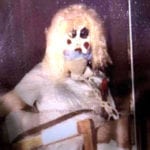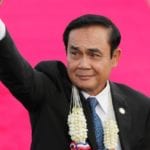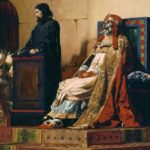 Weird Stuff
Weird Stuff  Weird Stuff
Weird Stuff  History
History 10 Legends Whose Last Moments Undid Their Glory
 Health
Health 10 Futuristic Ideas to Treat Common Medical Problems
 Weird Stuff
Weird Stuff Ten Surreal Attempts to Reverse Baldness
 Facts
Facts 10 U.S. Government Contingency Plans for the Unthinkable
 History
History 10 Weird Distractions from the Great Depression
 Movies and TV
Movies and TV 10 Fictional Kings Who Go from Good to Bad
 Food
Food The Fantastic Chemistry Behind Why 10 Popular Foods Taste So Good
 Technology
Technology 10 Futuristic Fungal Technologies
 History
History 10 Not-so-Spooky Events That Also Happened on October 31
 Weird Stuff
Weird Stuff 10 Things So Rare They’ve Only Been Found Once
 History
History 10 Legends Whose Last Moments Undid Their Glory
 Health
Health 10 Futuristic Ideas to Treat Common Medical Problems
Who's Behind Listverse?

Jamie Frater
Head Editor
Jamie founded Listverse due to an insatiable desire to share fascinating, obscure, and bizarre facts. He has been a guest speaker on numerous national radio and television stations and is a five time published author.
More About Us Weird Stuff
Weird Stuff Ten Surreal Attempts to Reverse Baldness
 Facts
Facts 10 U.S. Government Contingency Plans for the Unthinkable
 History
History 10 Weird Distractions from the Great Depression
 Movies and TV
Movies and TV 10 Fictional Kings Who Go from Good to Bad
 Food
Food The Fantastic Chemistry Behind Why 10 Popular Foods Taste So Good
 Technology
Technology 10 Futuristic Fungal Technologies
 History
History 10 Not-so-Spooky Events That Also Happened on October 31
10 Good Things Done By Evil Dictators
History is filled with evil dictators who ruled through fear and violence, a scourge to their subjects and other nations alike. But, much like a broken clock is right twice a day, some of the most infamous dictators have occasionally done something right. This list is not remotely intended to excuse the atrocities of the men involved, just to point out that hell can freeze over just enough for bad men to do good things.
10Hitler Led One Of The First Anti-Smoking Campaigns
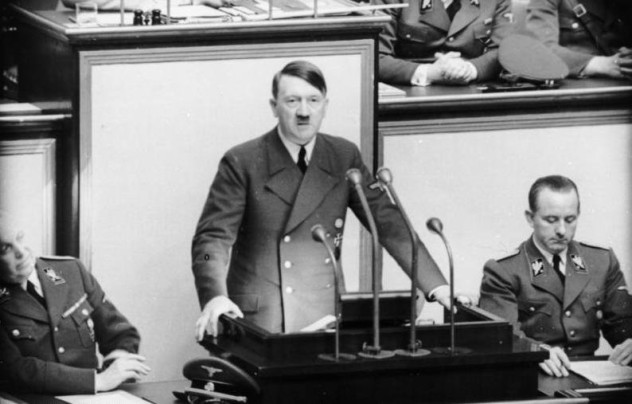
Introducing a health program that saved the lives of 20,000 women would be a huge achievement for any politician. Well, unless that politician was Adolf Hitler, a man who infamously ordered the mass murder of at least 11 million people he considered undesirable, including Jews, homosexuals, gypsies, communists, and the disabled. A mere 20,000 really does pale in comparison.
The health program in question was actually one of the earliest government anti-smoking campaigns. Hitler was obsessed with the idea of an Aryan “master race” and viewed smoking as a threat to the health of the German people. He often boasted that he had quit smoking in 1919 and appeared on anti-smoking leaflets warning that “every German is responsible to the whole people for all his deeds and omissions, and does not have the right to damage his body with drugs.”
Meanwhile, Nazi scientists were encouraged to research the dangers of smoking. In 1939, Franz Muller produced the first epidemiological study linking cigarettes to cancer. By 1943, German researchers had conclusively shown that smoking causes lung cancer. Sadly, the studies were forgotten in the chaos that followed the war and it took another decade before American researchers started to reach the same conclusions. Still, the Nazi anti-smoking campaign is estimated to have saved the lives of at least 20,000 women (who were targeted more than men, often with “police force”). Which, again, rather pales considering that many of the same doctors who led the anti-smoking program also organized a euthanasia program that killed at least 200,000.
9Genghis Khan Introduced Laws And Religious Freedom
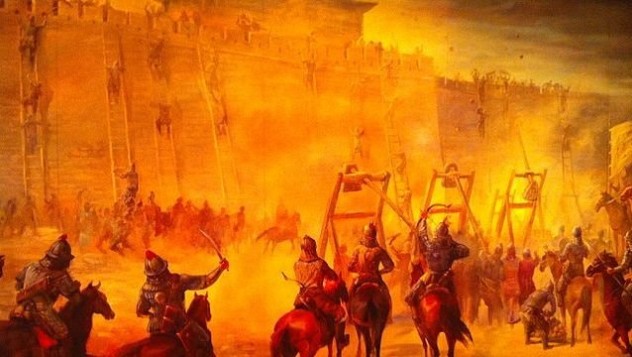
What is there to say about Genghis Khan that hasn’t already been said about the bubonic plague? Erupting from the Mongolian steppe, his forces raced across Eurasia, destroying ancient empires and killing an estimated 40 million people (around 11 percent of the global population). According to Julia Pongratz of the Carnegie Institution For Science, the slaughter Genghis unleashed removed 700 million tons of carbon from the atmosphere. That’s right, Genghis Khan killed so many people that it noticeably effected the carbon output of the Earth.
But Genghis wasn’t just a destructive maniac—he was intent on building a Mongol nation. In 1208, he captured a Uygur scribe named Tatar-Tonga, who adapted the Uygur alphabet to create the first alphabet for writing the Mongol language. Genghis also created a legal code and applied it throughout his empire. Astonishingly, Genghis insisted that these laws should apply to himself as well as his subjects. In a world where monarchs were considered to be above the law, this was an incredible step (his heirs dropped it almost immediately). Genghis even made his adopted brother supreme judge and encouraged him to keep a record of all legal decisions.
The Khan also granted religious freedom to everyone within his empire and gave tax exempt status to places of worship. He was known to be very spiritual himself, often praying before campaigns, and enjoyed discussing religion and philosophy with scholars like the Taoist Qiu Chuji.
8Ashurnasirpal Threw History’s Greatest Party
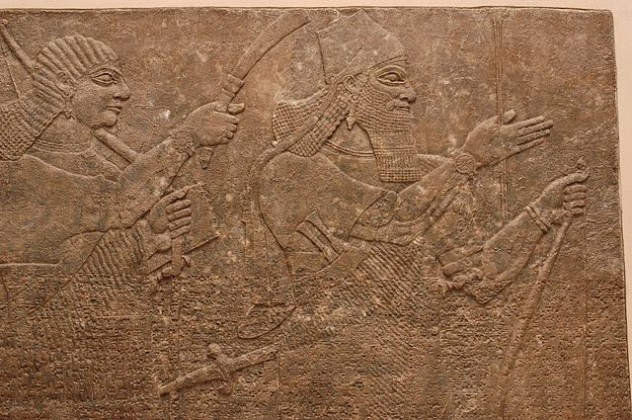
Ashurnasirpal II was a powerful Assyrian king who ruled from 883–859 BC. He also loved skinning rebels alive. In one instance, he proudly boasted that he had “flayed as many nobles who had rebelled against me and draped their skins over the pile [of corpses]; some I spread out within the pile, some I erected on stakes upon the pile. I flayed many right through my land and draped their skins over the walls.”
He was also known for burning his enemies alive, gouging out their eyes, or leaving them in the desert to die of thirst. Even by the standards of the time, this was a little excessive. But when not in a flaying mood, Ashurnasirpal could be quite generous to his subjects. Among other things, he threw them possibly the biggest party the ancient world had ever seen.
The festival was to celebrate the creation of a new city called Kalhu. According to Assyrian inscriptions, some 69, 574 people were invited from all across the empire and beyond. For 10 days, Ashurnasirpal “gave them food, I gave them drink, I had them bathed, I had them anointed. Thus I did honor to them and send them back to their lands in peace and joy.” Even the menu has survived, listing 1,000 oxen, 14000 specially imported sheep, 10,000 fish, 10,000 eggs, and 500 gazelles.
Interestingly, scholars have noted that Ashurnasirpal didn’t have any political need for the festival—no other Assyrian ruler held a similar one—and probably just did it because he wanted to show off his new city and have a huge party.
7Gaddafi Started The Biggest Irrigation Project In The World
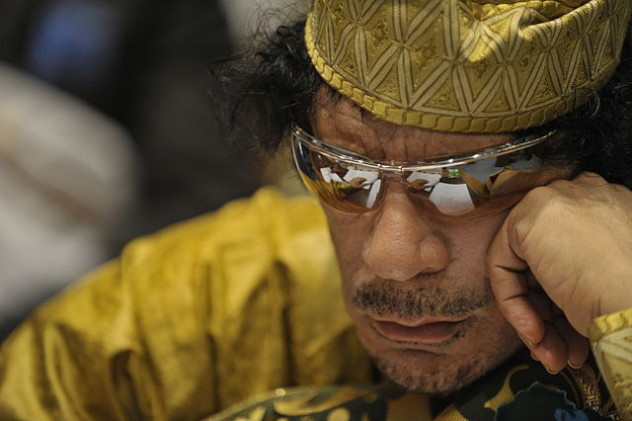
Muammar Gaddafi took power in a bloodless coup in 1969. Sadly, the rest of his time in power would be rather less bloodless. Libya became a nightmarish police state, where enemies of the regime were regularly imprisoned and murdered. Even fleeing overseas didn’t help, as Gaddafi became known for sending assassins after Libyan dissidents living abroad. He was also an enthusiastic supporter of terrorism. Most notoriously, Libyan agents were blamed for the bombing of Pan Am Flight 103, which exploded over Lockerbie in Scotland, killing 270 people. He was violently overthrown in 2011, leaving a country ravaged by civil war.
So did Gaddafi do anything for the people of Libya? Well, under his leadership Libyans did get free education, healthcare, and electricity, plus subsidized housing and transport. On the other hand, Libya was a country of six million people and $32 billion in yearly oil revenues, yet boasted 30 percent unemployment and widespread poverty. With that context, Gaddafi’s social programs look less like government generosity and more like the bare minimum needed to placate the population while the elite siphoned off billions of dollars.
But Gaddafi could boast at least one genuinely impressive project. Libya is one of the driest countries in the world, dependent on sparse rainfall along the coast, underground aquifers, and expensive desalination projects. When Gaddafi took power in 1969, many coastal aquifers had been polluted by seawater. The city of Benghazi was virtually without drinkable water. So Gaddafi developed the Great Man-Made River Project, a hugely ambitious plan to pump water from giant aquifers in the isolated south to the populated north of the country.
The first two phases of the project were completed in the ’90s, bringing a reliable supply of fresh water to 70 percent of Libya’s population. This required a network of 1,300 wells and 5,000 kilometers (3,000 mi) of pipes. The system is capable of pumping five million cubic meters of water per day and the aquifers are large enough to supply water for the next 1,000 years. There were plans for the system to be expanded “turn the desert green” and create large farms in previously unproductive areas. However, work slowed in the ’90s due to sanctions imposed after the Lockerbie bombing and stopped entirely during the Libyan civil war of 2011, when NATO bombing destroyed a key factory.
6Fidel Castro Revolutionized Healthcare And Education
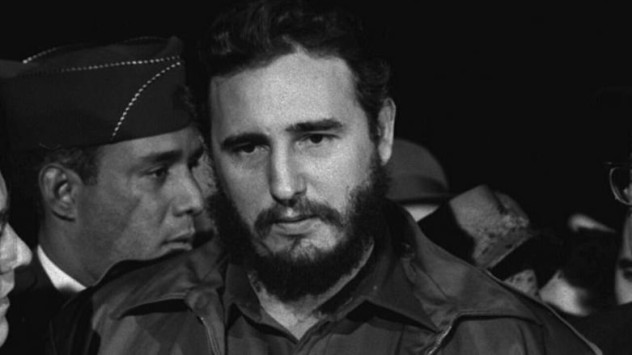
After taking power in 1959, Fidel Castro turned Cuba into a one-party dictatorship, forced tens of thousands of Cubans into exile, executed a number of dissidents, and threw many others into prison. Amnesty International and Human Rights Watch have described his government as one of the worst human rights abusers out there. But deplorable as Castro’s rule was, he can boast some genuine achievements.
For example, the US and Cuba have roughly equal life expectancies, despite the US spending 20 times as much per capita on healthcare. This can be attributed to the national healthcare system put in place by Castro, which saw great success despite the fact that half of Cuba’s doctors had fled the country immediately after he took power. In 1959, nearly a quarter of Cuba’s adult population were illiterate. Today, adult illiteracy is almost nonexistent.
After the revolution, Castro’s regime gave land to landless farmers, created new housing to replace slums and shantytowns, and introduced a system of universal education. Cuba also does a good job in hurricane preparedness. Each block in Cuba has a captain assigned to it, in order to help with evacuations (which are mandatory), while government buses and trucks bring people to designated shelters. The results speak for themselves: when Hurricane Gustav hit Cuba, not a single person died. The same hurricane then killed 26 people in Louisiana, causing US diplomat Wayne Smith to conclude that “there is a lot the United States can learn from Cuba’s hurricane response system.”
5Napoleon Pioneered The French Legal Code
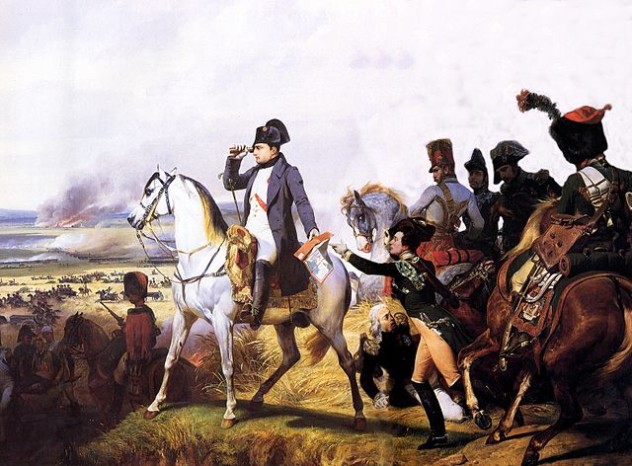
Hero to some, devil to others, Napoleon led France through some of Europe’s bloodiest conflicts since the Thirty Years’ War. An estimated two million people died as a direct result of his wars, while another million civilians were probably indirect casualties of the campaigns. The fighting was particularly brutal in Spain, where Napoleon’s forces carried out widespread executions of suspected guerillas.
Despite such brutality, Napoleon was at least a semi-fan of enlightenment principles. For example, he promoted the system of laws known as the Napoleonic Code, which is now considered one of the most influential documents in world history. The Code entrenched the principle that all male citizens should be considered equal, without hereditary class privileges, and outlined the rights and duties of citizens in society. It also established religious freedom and guaranteed that the government would respect private property. Variations of the code were eventually adopted by most countries in Europe and South America, and it was a huge influence for reformers in Asia as well.
However, the Code did have its flaws. Among other things, it ruled that women should not share equal rights, but rather should be considered subordinate to their husbands. These aspects of the code had to be fought by early women’s rights campaigners across the world.
4Augusto Pinochet Still Influences Chile’s Economy
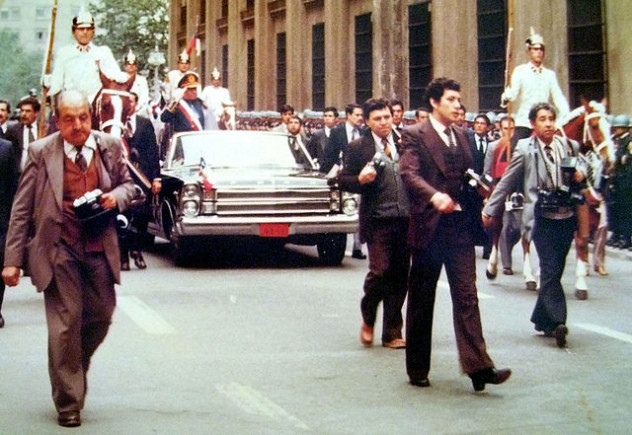
During the reign of Chilean dictator Augusto Pinochet, over 3,000 people were permanently “disappeared.” His regime also imprisoned tens of thousands and brutally tortured at least 28,000 of its perceived enemies. Among those tortured were current Chilean president Michelle Bachelet and her mother.
Under Chile’s socialist president Salvador Allende, wages grew and many sectors of Chile’s economy were nationalized. However, by 1972 the economy had begun to stagnate and inflation reached 500 percent at its peak. In 1973, Pinochet, who was commander-in-chief of the army, came to power in a bloody CIA-backed coup that resulted in the death of Allende. He soon recruited a team of economists from the University of Chicago to restore economic stability to Chile. Trained under Milton Friedman, “the Chicago Boys” proposed a neo-liberal economic policy, including the removal of trade barriers and state regulation of commerce, as well as low income taxes and a program of privatization.
What happened next is subject to debate. Some people have termed the period “the Chilean Economic Miracle” as inflation fell from 375 percent in 1975 to 9.9 percent in 1982. Chile’s GDP grew by 8 percent in 1977 and 1979 and a staggering 10 percent in 1989. However, Pinochet’s detractors point out that the GDP actually fell by 16 percent in both 1982 and 1983, as part of an economic crisis that virtually wiped out the country’s financial sector. The economic growth that did occur mostly benefitted the upper class, hugely increasing income disparity. However, Pinochet’s economic reforms did eventually result in overall economic growth and largely remain in place today. Meanwhile, the richest 20 percent of Chileans still earn 14 times as much as the poorest 20 percent.
3Zia-Ul-Haq Oversaw A Booming Economy
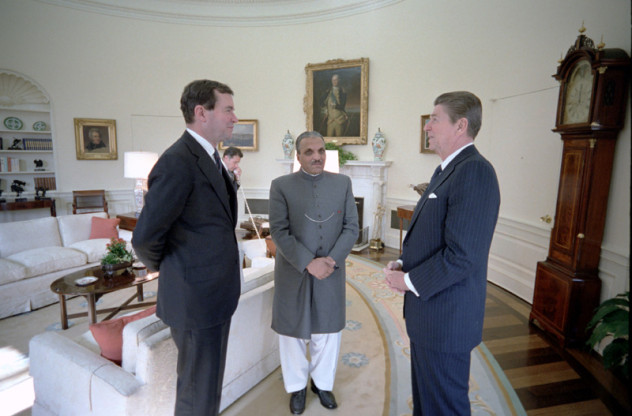
Under Pakistani strongman Muhammad Zia-ul-Haq’s hardline Muslim regime, state persecution was normal, with women, political dissidents, and minorities particularly likely to be targeted. One notable example was his treatment of the Ahmadiya sect, who had their worship criminalized and were often sentenced to death for breaking blasphemy laws.
But Zia-ul-Haq did oversee a period of sustained economic growth. During his time in office from 1977–1988, GDP growth averaged six percent per year, agricultural income grew by four per cent a year, and manufacturing saw growth of 9 percent per year. Part of this was due to the liberalization of the economy, which encouraged private-sector growth. Several public industries were also denationalized (the banks were a notable exception). He also encouraged free trade. Following his death in a plane crash in 1988 (his dentures alone survived the fireball in recognizable form), a “million-strong crowd” turned out for his funeral procession, lauding him as a “great Muslim.”
2Rafael Trujillo Encouraged Stability And Prosperity
Rafael Trujillo rose to power in 1930 and would rule the Dominican Republic with an iron fist until he was assassinated 1961. Like everyone on this list, Trujillo was one of the worst human beings the world has ever seen. His forces tortured and murdered anyone who opposed him, throwing the bodies to sharks. In 1937, he ordered the murder of an estimated 20,000 Haitians living in the Dominican Republic. Trujillo’s thugs fanned out across the borderlands, demanding that peasants say the tricky Spanish word perejil (“parsley”). Anyone deemed to have a Haitian accent was immediately killed.
Unsurprisingly, Trujillo was not popular, but the Dominican Republic did at least see some increase in the standard of living during his reign. There were improvements in sanitation and his regime built hospitals, roads, and schools. Of course, there was a catch, as Trujillo and his cronies creamed off a significant part of the public works budget through kickbacks and embezzlement. Furthermore, Trujillo paid off all debt, kept the currency stable, and built or improved airports and public buildings. In terms of his successes, the Encyclopedia Britannica put it best: “Competent in business, capable in administration, and ruthless in politics, Trujillo brought a degree of peace and prosperity to the republic that it had not previously enjoyed.”
1Periander Was Known As A Wise But Cruel Ruler
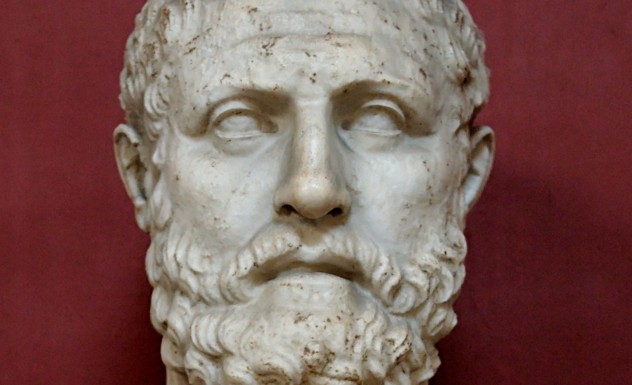
Periander was the tyrant of the Ancient Greek city of Corinth from around 627–587 BC. According to Herodotus, when Periander took the throne, he sent a messenger to another Greek tyrant asking for advice. The tyrant led the messenger to a field and walked through it hacking down the tallest ears of wheat. Periander got the message and murdered or exiled the most talented citizens of Corinth, who might one day lead a challenge to his rule.
His cruelty soon came to shock his fellow Greeks. For example, some of his ships once docked on Samos while taking the sons of 300 leading citizens to Sardis to be castrated and sold into slavery. The Samians were so horrified by this that they told the children to take refuge in the temple of Artemis and forcibly prevented the Corinthian soldiers from retrieving them. Periander himself was said to have killed his own wife by kicking her when she was pregnant. Afterwards, he felt remorseful—so he had the concubines he blamed for the fight burned alive.
Despite his cruelty, Periander did a great deal to improve the city he ruled. He forged alliances with Greek and non-Greek states alike and greatly improved trade with the western Mediterranean. He negotiated peace between Athens and Mytilene and established colonies on the Balkan peninsula. He sponsored the construction of a dragway across the Isthmus of Corinth, allowing ships to be pulled across in order to cut down on transport times. Poets were invited to his court and the Doric architectural style was established during his reign. After his death, he became known as one of the Seven Wise Men of Greece and was credited with writing a collection of some 2,000 verses.
K.W. Hales is a freelance writer from Chattanooga, TN.
